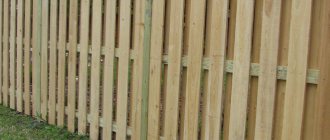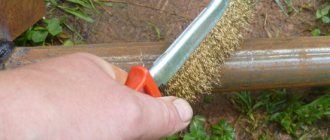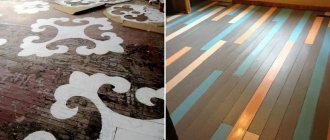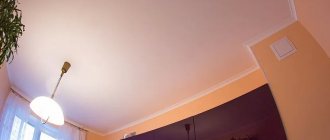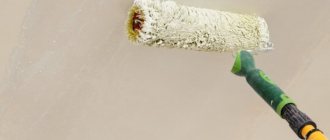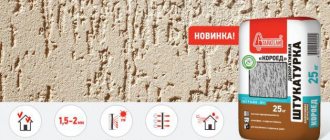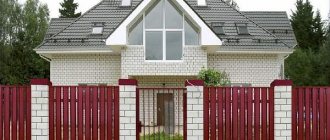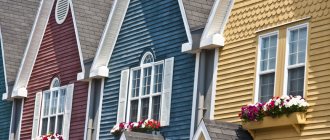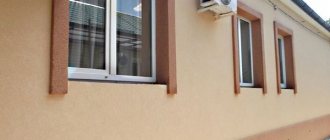Painting is a rather complex process that requires not only a lot of time and corresponding financial expenses, but also attentiveness, as well as the ability to perform monotonous and monotonous work for a long time. Many domestic citizens are interested in the question of how to paint a wooden fence installed at their own dacha. It should be noted that the features of this process directly depend on the type of fencing. Let's look at the painting process using the example of one of the most popular types of wooden fencing structures - picket fence.
Why is it necessary to paint the picket fence?
The picket fence itself is a rather weak structure in terms of structural strength. This is due, as a rule, to the extremely small size of the fence, as well as the use of relatively thin materials. By and large, a picket fence is an exclusively decorative fence, since it in no way can prevent illegal entry into the site.
The picket fence is purely a decorative fence, since it cannot in any way prevent illegal entry into the site.
It is the use as an object of decoration in landscape design that is one of the reasons requiring painting. Also, do not forget that wood is extremely susceptible to negative environmental influences, namely:
- increased humidity levels;
- sudden changes in temperature;
- long-term exposure to ultraviolet rays.
Under the influence of these factors, wood can crack, lose its attractive appearance, darken and even rot. In addition, it may be attacked by pests such as termites or various bacteria.
Current technologies for the production of paints and varnishes make it possible to create very high-quality paints that can ensure the safety of wood and also last for the longest possible period of time.
A layer of paint allows you to qualitatively protect against atmospheric and temperature manifestations, pests and microorganisms.
Current technologies for the production of paints and varnishes make it possible to create very high-quality paints that can ensure the safety of wood and also last for the longest possible period of time. Thanks to them, such a sacred dream of many dacha owners as a presentable and attractive fence made of white pickets will become a reality.
How to paint a metal fence
- If the fence is not new, it may have rust. We get rid of it using a special remover or rust converter.
- We treat the clean surface of the metal fence with a metal primer.
- For paints, it is better to use alkyd or epoxy enamel, acrylic paint. Anti-corrosion ingredients may be included in the formulations.
What is the best way to paint a fence? A wooden or any other fence is a fence that performs a protective function and serves as a decoration for the site, fitting perfectly into its landscape.
The most popular material used for fencing houses, cottages or summer cottages is wood, which is associated with its durability and ability to maintain performance characteristics for a long time. This article will tell you how to paint fences made of different materials with your own hands.
Even a very high fence of the site will not become a serious barrier to unauthorized entry by strangers, if they want to steal.
Therefore, the main functions of a fence at a summer cottage are:
- Wind protection.
- Designation of territory boundaries.
- Protecting your yard from prying neighbors' eyes.
Every owner of a country house wants to have a durable, reliable fence with an excellent appearance, and its price is not too high.
Now there are a large number of fencing options, for which different materials are used, differing in:
- Purpose.
- Cost.
- Sizes.
- Appearance.
Selection of paints and varnishes
In the modern specialized market of paint and varnish products, there is an impressive selection, which is why it will be very difficult for a person who has little knowledge of this topic to choose the right option. You also need to remember that using the wrong paints or improper painting will cause no less damage to a wooden fence than the above environmental factors. Therefore, the choice of paint and varnish materials must be taken with full responsibility.
Since the picket fence, as a rule, will be in plain sight, for example, decorating a recreation area on the territory, framing a house or advantageously complementing the original flowering flower beds, the paints used must necessarily create not only a protective, but also a decorative coating.
First of all, special impregnations are chosen that protect the wood from the penetration of moisture, insects, mold, mildew and other misfortunes. There are both store-bought impregnations and homemade ones. It will, of course, be cheaper to produce such a substance yourself, but their performance qualities will not always meet even the minimum requirements. Accordingly, saving in this case is not recommended. It is advisable to give preference to antiseptic drugs produced by well-known brands, for example, Tikkurila, Pinotex and others.
In addition to impregnations and paint, you must also choose a primer. This is a special product that creates a thin layer on the surface of the wood, which simultaneously creates additional protection for the structure of the wood and significantly increases its adhesion to paints. Thanks to the primer, the surface will be well leveled, and the paint will lie on it as smoothly and firmly as possible.
First of all, special impregnations are chosen that protect the wood from the penetration of moisture, insects, mold, mildew and other misfortunes.
In addition to impregnations and paint, you must also choose a primer.
Modern paint manufacturers delight consumers with an impressive range of this type of coloring compositions:
Preparing the surface for painting
A prerequisite for the technological process of painting a wooden surface is preparatory work. Only a smooth and clean surface will ensure high-quality painting. The very first step is to sweep away all the dirt, dust, cobwebs and moss using water and a brush. After this, you should walk over the entire surface and remove knots and nicks. To do this you will need sandpaper. Drops of resin can be easily removed with a spatula, and all pits and small holes can be filled with putty.
Many owners of private houses, cottages, and suburban areas are wondering how to properly paint a wooden fence if it has already been coated with paint and varnish. There is only one answer - carefully remove the old coating layer using an iron bristle brush, sand the surface, level it with putty and apply a new coating.
Oily
The advantages of classic oil paints are obvious - they have good protective functions, as well as an affordable price in many respects. Unfortunately, this is where the advantages of such products end. However, there are a number of shortcomings, so when choosing what to cover a wooden fence with, oil paints should be the last thing you pay attention to.
The advantages of classic oil paints are obvious - they have good protective functions, as well as an affordable price in many respects.
Flaws:
- inability to penetrate deep into the wood structure, due to which the paint layer will in any case be superficial;
- short service life - regardless of the thickness of the layer, it will begin to peel and crack in two to three years, and maybe earlier if climatic conditions are favorable for this;
- instability to environmental influences. Oil paint is extremely poorly resistant to moisture and direct sunlight. Under the sun, such a coloring solution will quickly lose its attractive appearance, fade and crack. In this case, a certain paradox is also noted - despite the fact that the sun has a destructive effect on oil compositions, it is best to apply them in sunny weather, as this contributes to their faster drying;
- long drying. They take an indecently long time to dry, as for modern realities, time - at least a day. In many cases this is a very significant drawback, causing many inconveniences.
Which paint should you choose?
Oil based paints
Very popular and affordable for painting picket fences
are
oil based paints
. It should be noted that such paints are not ideal for such work. Moisture accumulates under oil-based paint, which is bad for wood, but creates an ideal environment for microorganisms. Likewise, a picket fence will collapse faster. Good oil-based paints will require changes after 4-5 years, and those coated with an antiseptic after 5-6 years.
Enamel
Enamel is used to apply a layer of protection to all surfaces to protect against atmospheric influences. Enamel is affordable and quite economical to use, as it is not absorbed into the wood structure. This paint leaves a durable film on the surface that reliably protects the wood. A serious disadvantage of enamel is that it is vulnerable to direct sunlight and temperature changes.
Latex or water-based polyacrylate paints
The best choice for painting picket fences
will be acrylic or latex paint.
Dispersion paint will provide a good indicator of reliability and strength of the coating. Paints of this group do not emit toxic substances when dry, and they can also hide even small cracks. In order to get a good coating, in most cases the picket fence is coated with paint in 2 or more layers. The advantage of these paints is also their flexibility. Water-based polyacrylate based water-based paints perfectly tolerate humidity, sunlight, and are resistant to sudden temperature changes. If you use acrylic-based paint
on top of the primer mixture, you can increase the working time from 7 to ten years.
The price is not high enough, making acrylic-based paint
an excellent option for
painting picket fences
.
Alkyd
A better quality option than oil paints. Such compositions are also characterized by an affordable price for many consumer categories, and they are much more durable. If you paint the picket fence with bitumen paint, you can forget about the need for repainting for three to four years. However, alkyd solutions are, by and large, intended for application in areas in contact with the ground. This could be, for example, the foundation, or simply the lower part of the fence.
Fence "Herringbone"
Another type of horizontal fence is called a “herringbone”. It is named so because the boards are laid close to one another, and with an overlap on the one located below. In profile it looks like a Christmas tree, as children draw it.
Wooden herringbone fences create a continuous covering
It is more difficult to climb up such a fence. Please note that there is a protective visor on top. It protects the most vulnerable part of the fence, greatly extending its service life, and also delaying the time for the next painting. After all, usually the coating at the top and bottom is the most damaged. This fence is protected from below by a plinth and from above by a canopy.
Deck
Very high quality compounds used for finishing work on ships. They have incredibly high resistance to negative environmental influences - moisture, ultraviolet rays, sudden temperature changes, severe frosts, or vice versa - heat, hail, wind, etc. It is virtually impossible to damage the protective layer of deck varnish or paint unless you try to do it on purpose.
They have incredibly high resistance to negative environmental influences - moisture, ultraviolet rays, sudden temperature changes, severe frosts, or vice versa - heat, hail, wind, etc.
The only drawback of these solutions is their high cost, which is not at all surprising given their quality. Therefore, it is recommended to use the product only when painting small areas. Considering that the picket fence is precisely that "minor area", buying several cans of deck paint can be quite justified.
Photos of beautiful fences
It’s simply amazing what beauty people can make from a piece of wood. Really beautiful. And some of them are not very complicated.
Maybe someone will be inspired by these photographs of old wooden fences, they can be repeated...
Disappearing beauty...
A wooden fence requires special care and protection, since the natural material from which it is made is highly susceptible to deterioration under the influence of unfavorable environmental conditions. Properly selected paint and varnish composition will help extend the service life and give the fence a beautiful appearance. In this article we will talk about painting a wooden fence with your own hands.
The coating for a wooden fence must be of high quality and durable, providing reliable protection for the material from moisture, frost, precipitation and sunlight. Among other things, the paint should prevent the growth of fungi, mold and bacteria in the wood. It is also good that the finish retains its attractive appearance and does not fade over a long period. Let's take a closer look at what paints can be used for wooden fences.
Alkyd enamels
Alkyd enamels can be considered an inexpensive type of wood coating. These are multicomponent substances, which include acids, polyhydric alcohols, as well as fillers in the form of drying oil, resins or any oils.
Despite the low price, many experts do not recommend using enamels for wood processing. Firstly, such compositions do not tolerate sunlight and temperature fluctuations well; in just a year, the enamel on the fence can crack. Water will get into such cracks, leading to damage to the boards. Secondly, the enamels themselves do not have the best effect on the structure of the wood. The enamel layer on the fence will have to be renewed almost every year, so the low cost of the material should not be taken into account.
Acrylic paints
Another material option suitable for painting a wooden fence is acrylic paints. You can buy them at a very reasonable price, and good quality coating will serve you for many years.
The advantages of such paints include the fact that they perfectly withstand the adverse effects of environmental factors: precipitation, fog, high humidity, frost, temperature changes, heat and sunlight. The paint will be more durable if you soak the wood with a primer from the same manufacturer before using it. It should be noted that such materials retain their color for a long time and do not fade under ultraviolet rays.
To paint a wooden fence, you can use facade acrylic paint, but it is important to remember one subtlety: the color of the composition will not fade in the sun if the pigment was added by the manufacturer. If you decide to customize the paint yourself, it may be less durable.
Oil formulations
Oil paints have been used for wood processing for many decades. They have their advantages and disadvantages. The advantages include their low cost, as well as the ability to create a durable waterproof layer on the surface. Oil paint will reliably protect the wood from moisture and the negative effects of temperature. It is also a good antiseptic; fungi, mold and bacteria will not settle in a fence treated with a similar composition.
The disadvantages of the material include its unpleasant odor, long drying time, and color instability. Over time, the coating fades in the sun, becoming pale and unattractive. If you decide to remove the old layer of oil paint from the fence, you will also have to try, since it is not so easy to remove.
Antiseptic solutions
Some people prefer to use a special antiseptic instead of paint. There are two types of such funds:
- covering – have an opaque structure;
- glazing – characterized by transparency.
The main purpose of an antiseptic is to protect wood from insect pests, mold, bacteria and fungi. The type of antiseptic is chosen depending on the desired end result. Glazing compounds will help preserve the natural beauty of the boards, giving them only a slight tint. Coating agents, like paint, will completely change the color of the wood.
It should be noted that antiseptics are toxic. In the case of a fence, which is usually located in the open air, this property is not categorical, although when working with such substances it is still recommended to comply with safety requirements.
Tips for choosing paint for picket fences
It is strongly recommended to choose impregnation, primer and paint from the same manufacturer. Despite the general principle of operation of these coloring solutions, each company has its own technology for their production, and therefore different types can combine quite poorly with each other.
Be sure to read the instructions for use of the product, which, as a rule, are applied directly to the jar. You need to pay attention to consumption, acceptable application methods, drying time and other technical parameters, and compare them with existing requirements.
Be sure to read the instructions for use of the product, which, as a rule, are applied directly to the jar.
It would be a good idea to visit the manufacturer’s website, because the most complete information can only be obtained there. Don’t save money - buy paint with a reserve, because even with the most accurate calculation of the amount of material required, as a rule, it is not enough.
It is not necessary to paint the picket fence one color. You can combine them by painting the posts or crossbars in one shade, and the pickets in another. You can even mix different compositions, getting completely original color solutions. It will look especially stylish in combination with beautiful garden paths leading to the fence.
It is not necessary to paint the picket fence one color.
Two types of mixtures are created specifically for coloring wood - glazing and covering. It is imperative to clarify whether the purchased product belongs to these two types. The difference between them is that glazing preserves the natural structure of the wood and even its shade, while covering creates a very dense surface layer that hides the real color of the material.
How to repaint a picket fence
Privacy Statement Dulux Australia is a division of DuluxGroup (Australia) Pty Limited (ACN 000 049 427) (“Dulux”). The terms “we”, “us”, “our” refer to the company and any of our affiliated companies. Your privacy is important to us: Dulux will use the information you submit to administer your account and may share it with third parties for this purpose. Dulux (and its marketing and communications agencies on its behalf) may also use your name and contact details to send you information for this purpose. If you agree to receive updates for Dulux products or promotions, Dulux (and its marketing and communications agencies from its name) may also use your name and contact details to send you information for this purpose. Dulux may disclose information for these purposes to contractors, market research organizations, marketing and communications agencies and related organizations. If you do not provide the requested personal information, we may not be able to fulfill your request. We may also share your personal information with other related companies and our service providers, such as delivery services and technology providers. See. Our Privacy Policy, available on our website (www.dulux.com.au/privacy-policy) or upon request. It contains additional information about: (i) the personal information we collect; (ii) what we do with it; (iii) where we ship it; (iv) how you can access and correct it; (v) how you can make a privacy complaint regarding the processing of your personal information; (vi) how we handle these complaints; (vii) online privacy; and (viii) the types of service providers we use. If you have any questions about how Dulux processes your personal information, or would like to access or correct the personal information we hold about you, please contact our Privacy Officer via privacy @ duluxgroup.com.au or call by phone +613 9263 5678.
.
Preparing the picket fence surface for painting
Before starting any painting work, the surface to be painted undergoes thorough preparation. In the case of a fence, it is as follows:
- removing the old layer of paint;
- removal of contaminants ingrained into the structure;
- sealing any structural defects, such as cracks, grooves, bumps, etc., for which wood putty is used;
- grinding and polishing;
- surface leveling;
- if necessary, replace pickets that cannot be used due to significant mechanical damage.
Removing the old paint layer
Removing contaminants ingrained into the structure
Repairing any structural defects such as cracks, recesses, bumps, etc.
Sanding and polishing
Leveling the surface
Replacement of pickets that cannot be used due to significant mechanical damage.
High-quality preparation is very important. Not only the quality of the coating, but also its protective and decorative functions directly depends on it.
It is recommended to choose warm and sunny weather for the dyeing process. This should be done even in cases where coloring compounds are used, the instructions for which indicate the possibility of use in damp and cold weather.
Paint selection
The first question that appears after the picket fence has been installed is: what is the best way to paint it? When selecting paint, you need to look at the following specifics:
- the paint should adhere perfectly to the wood surface;
- Good paint should not leave streaks;
- Look at the consistency of the paint; it should not be too liquid. This paint is very uncomfortable to use. It will flow from the surface of the picket fence and will not provide a light coating;
- The paint should last a very long time.
For a rich finish, you need to apply a couple of layers of paint. There are also translucent oil paints; they give the wood a light tint and shine. Such paints will perfectly highlight the texture of the wood and preserve it for a long time.
Photo 2 – Picket fence painted in light colors
Painting process
In order for the result to meet all expectations, it is necessary to strictly follow the established rules and recommendations, as well as the procedure for performing the work:
- First of all, impregnation is applied. One layer is enough, but you must ensure that the solution gets into all the microcracks and pores, closing them. Antiseptics dry very quickly, and after a short period of time it will be possible to begin the second stage.
- Before you start solving the question of how to paint a wooden picket fence, you need to prepare the base for the paint and varnish material. This is a task for the primer. It is recommended to use an alkyd-acrylic primer. As with impregnation, one coat is sufficient. But it is very important to let it dry completely. It is strictly not recommended to apply primers to surfaces that are not leveled and have obvious signs of contamination.
- The next step is applying the first layer of paint. It is advisable to paint the picket fence with a natural hair brush. This tool will not create stripes on the wood. If you have a roller, you can use that too. You can also resort to using a spray gun, but competent work with it requires the appropriate knowledge and skills.
- After the first layer has dried, a thorough inspection is carried out for various defects. They need to be removed, cleaned and painted.
- Applying the second, final layer of the color mixture. The same tools are used as when painting the first layer.
- A high-quality final inspection is carried out. Detected gaps, smudges, smudging and other defects must be eliminated immediately, before the surface is dry.
It is advisable to paint a picket fence on both sides, even on the reverse side, which is traditionally not visible either from the street or inside the site, depending on the purpose of the fence. This will help reliably protect it from the destructive effects of moisture.
How to paint a wooden fence so that it lasts 10 years or more
Bagretsov Alexey Vladimirovich project manager Moscow
A fence made of wooden picket fence is an environmentally friendly design, aesthetically attractive, but without proper processing it is quite weak and short-lived. How to paint a wooden picket fence so that it lasts a long time, is functional and pleasing to the eye? This question will be answered in detail by technologists - specialists with deep knowledge of theory and extensive practical experience.
What will you learn about in the article?
- Why does wood need to be coated with protective compounds?
- The best way to paint a wooden picket fence
- How to paint a wooden picket fence - application technique
Why does wood need to be coated with protective compounds?
Despite the many advantages of wood, it also has disadvantages. Lumber is exposed to negative natural factors (snow, rain, sun, wind), causing it to become covered with mold, fungi, lose its original attractiveness, rot and collapse. To avoid such troubles and extend their service life, wooden structures are treated with deep penetration primers (for example, primer from Teknos) before painting.
Photo 1. Shield painting without antiseptic
Primers for exterior use are made on an alkyd base. Alkyds have a small molecule, due to which they are able to penetrate deeply into the structure of the wood, enveloping the fibers and holding them together when hardening. A few days after treatment, the lumber acquires high strength, but it can be coated with a new layer of paintwork the very next day. As a result of processing, a picket fence or any structure acquires the following properties:
- durability;
- weather resistance;
- its absorbency decreases;
- natural texture stands out;
- the consumption of finishing paints is reduced.
Antiseptic
- This is the first means of preventing fungal infections, mold and blueing of wood. A high-quality antiseptic will destroy pest beetles and their offspring in the form of larvae, which cause significant damage to wooden structures.
Photo 2. Protruding mold on a planed board
Modern industry produces a huge number of all kinds of paints and varnishes for wood with different compositions and consistencies. It’s difficult for even an experienced person to get confused in such a variety, let alone an ordinary person who decided to paint a fence for the first time in his life.
The best way to paint a wooden picket fence
It is a proven fact that incorrect painting can make financial costs meaningless and reduce the efforts of the master to nothing. Before buying an antiseptic primer, decide on a painting scheme. You may decide to paint the fence with covering paint, natural or hydro-oil, glaze varnish, or simply preserve the fence, leaving it without a finishing coat.
Photo 3. Fence under covering paint
When using edged boards, you must be prepared for the fact that the paint consumption will be twice as high as when processing planed boards. You can reduce consumption by using compositions for external work, which can be purchased on the website of the LesoBirzha online store:
- quick-drying alkyd antiseptic AQUA PRIMER 3130;
- for pine and larch we recommend primer-primer Renner YM M034, which ensures high adhesion;
- for painting with glazing compounds, buy transparent oil with antiseptic Gnature 870 Schutz Grund-Öl;
- under transparent and translucent varnish, apply tinting primer AQUA PRIMER 2900-02;
- to impregnate planken without painting, it is recommended to use the domestically produced non-washable antiseptic Neomid 430, the price of which is minimal compared to products of foreign brands, and the efficiency is high;
- under the Nordika EKO covering paint you should buy an inexpensive Teknol 1881 primer;
- If you want to save money and time, do not apply a finishing layer, but use the budget antiseptic Visasol, which can be tinted in any color and give the wood an original shade, while maintaining the natural pattern.
To color planed planks, use Renner YS M300 or YS M46 oils. They are applied over Renner YM M101 primer. With this painting scheme, the paint for the M300 wood picket fence will last up to 10 years.
years, and M46 is at least 6 years old. The advantage of oil paints is that the restoration of the structure in places of abrasion can be carried out locally, in contrast to covering paint, the renewal of which will require sanding the pickets.
Photo 4. Fence section painted with oil
Photo 5. Decorative fence for a summer house
How to paint a wooden picket fence - application technique
First, let's look at painting the new picket fence. If a planed board is used to build a fence, the sealed pores are opened by sanding with grain 80. Only after this, deep penetration soil is applied to the boards, which does not remain on the surface and does not dry out as a crust, but is absorbed into the fibers and hardens in the body of the tree at a depth of 1. 5-2 cm. By forming a solid root with the wood, the impregnation ensures good adhesion to the next layer of paintwork. Only with such an application scheme will the service life of the paint correspond to that indicated by the manufacturer on the product label.
Photo 6. Antiseptic boards in the workshop
The antiseptic is applied with a roller, brush, spray or dipping method. The concentrated composition must be diluted in the proportion recommended by the manufacturer. The drying time of the primer ranges from several hours to a day and depends on the composition. After the primer has completely dried, you can apply paint or varnish. For this, the same rollers, paint brushes, and pneumatic sprayers are used. When painting with a brush, movements are made from top/down and bottom/up. They start painting from the top, gradually moving down and smearing the drips.
In order not to stain the brush with soil when passing through the lower sections, lay an oilcloth close to the fence or place a piece of plywood, which is gradually moved forward. even better to paint the pickets before installing them.
. With this option, it is much easier to process the ends and longitudinal joists, and no unpainted marks remain on them.
Photo 7. Antiseptic boards in the workshop
Painting an old wooden picket fence is a labor-intensive procedure that requires patience. It is necessary to completely remove the old paint, clean the boards from debris, dust and burrs. Damaged pickets should be replaced with new ones, although cracks can be filled with wood putty.
Remove any raised paint with a spatula or a metal brush. In places where the paint adheres firmly, you will have to use a sanding machine. The old coating is removed down to the base, and then they follow the same scheme as provided for the fence from a new picket fence.
See how we can
December 10, 2019 1421
Brushed plank fence with sliding gates
71 m 876 850
15 days checkpoint Kubinka-60
06 December 2018 1977
Wooden fence with automatic gates and sensor system
101 m 1 111 000
18 days SNT Santoria
November 29, 2018 1358
Horizontal, double-sided wooden fence in color TM-1816
91 m 682 500
14 days CP “Usadba Zhedochi”
View other works
What tools are needed?
To paint a fence made of wooden material, it is better to buy paint in advance and prepare the tools so that you don’t have to look for anything at the right time. When choosing a paint and varnish product, you can get advice from specialists at a hardware store.
To paint a wooden fence, 3 main color groups are most often used.
- Alkyd paint products made from drying oils, oils and alkyd resins. This paint is particularly resistant to weather conditions, precipitation, and temperature changes. They can last about four years. Apply the paint only to a dry wooden base. This helps prevent flaking or blistering.
- Acrylic product that must be diluted with a water base. The advantage of acrylates is their ability to protect wood from moisture. The brightness of the color lasts a long time. At low temperatures the paint does not crack.
- Oil-based, long-drying paint. This is the cheapest option for painting a wooden fence.
For the dyeing process, you need to purchase brushes made from natural hair. It is advisable to choose several options of different diameters.
Creative ideas for painting a fence
To prevent a wooden picket fence from looking boring after painting when applying a single color, you can use your imagination and use a creative, designer flair in the design. After this, the fence will not look dull against the backdrop of monochrome fences.
A person has a wide field of activity for flights of fancy. For example, you can paint the fence in a classic, elegant style using white paint. Or draw cartoon characters on a wooden fence.
Whatever fence design you choose, you need to follow a two-step process when painting. This is a primer and two layers of paint (for the background and final coating). After priming, the fence should dry for a day. Then you can apply the background paint and let it dry for 24 hours.
Creative painting ideas for picket fence:
- white paint is the personification of classic style, elegance and spiritual purity.
- when creating a bright option, wooden planks can be painted in several colors. For example, make a fence in the form of colored pencils.
- the fence can be decorated with flower arrangements. A picket fence with daisies or poppies blooming on it looks great.
- on a wooden base you can depict a natural landscape, for example, a forest clearing, a field with walking horses or a night sky densely strewn with stars. You can draw village houses.
- If a fence picket fence is installed to enclose a playground, then painted animals, fairy-tale cartoon characters, or just funny faces would look appropriate on a wooden base.
- for a hut with carved patterns, the fence can be decorated in the Old Slavonic style, where thematic ornaments will be drawn. Any owner will be happy with such a fence.
- An interesting option is to apply multi-colored blots in the form of petals. Their edges can be shaded with dark paint.
- a wooden fence can be painted, adhering to the youth style - graffiti. Only a creative and courageous person can choose this option.
- To decorate in a nautical style, you can depict a snow-white yacht on a wave crest with fluttering sails. A sand strip interspersed with sea stones along the fence can complement the image.
If a person does not have the gift of an artist, you can turn to specialists for help to design a wooden fence.
Wicker from a board - a beautiful fence
A fence made of boards bent between posts looks unusual. They are intertwined between the pillars like a traditional wattle fence. They just make it from long boards.
Wicker fence made from boards
Most often they are found in a horizontal design. There are fewer joints and it is easier to bend long spans.
Horizontal mesh of fence boards
There are also vertical braids. To give them a finished look, strips are nailed at the top and bottom - they both hold the edges of the boards and protect them from bad weather.
Read also: Amur white grape variety
Vertically made Austrian braid
How to make such beauty, watch the video. It's really not difficult, but it requires a lot of strength.
